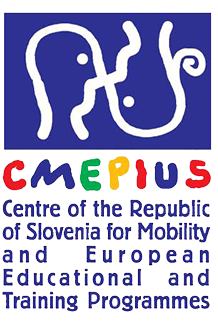Day 2 : Mapping
Welcome to DAY 2 of the learning period of the intensive one week-long event in Interdisciplinary Studies in Developing Cities for People!
On your second day of the intensive week, you will listen to the lectures about Mapping, Accessible tourism, and Asperger syndrome. On the Safety walk, you will observe safety issues of the specific area together with your vulnerable group. With the help of the mapping method, your common knowledge, and observations from previous days you will start the group work with analyzing and further work on your selected urban area.
Your task for DAY 2 is to visit the location, make some observations as part of a “safety walk”, collect data in the mapping handbook and work on analysing the site.
You can see more information about the work and the content of the second day below.
LECTURES:
- prof. Dr. Ana-Isabel Polo-Peña (UGR), dr. Francisco Peco-Torres (UGR) & Francisco J. Molina-Martin (University of Granada & Asociación de Ásperger de Granada): Accessible tourism
- assist. Aleš Švigelj (UL): Urban mapping
SAFETY WALK
It differs from the Jane’s Walk concept, even though there are some similarities as well. While Jane’s walk can be defined more as a social and cultural event, the safety walk is purely concentrating on safety issues in a specific area. The main principle of a safety walk is to bring local people together with officials and have a common walk where all participants can observe positive and negative safety-related findings, which might affect the safety, comfort, and equality of the residents and other people visiting the area.
As the sense of safety and safety-related needs vary between different user groups, for example, according to age, disabilities, gender, or social background, there can be different target groups when planning a safety walk. It is possible to perform a generic safety walk or narrow the scope and set a target from one of the user groups’ points of view. Different times, , e.g. during the day or at night, summer or winter conditions, can also offer a new perspective for a safety walk.
Commonly, residents and service users have a better understanding of the local safety-related problems and challenges than officials who do not necessarily know the area so well. Safety walks can be arranged in cooperation with residents and local service users, companies, organizations, and officials from the municipality. It has been noted that people are more confident in giving feedback to the officials during informal events than through official channels. This is one of the main reasons why a Safety Walk is a useful mapping tool.
GROUP WORK
Mapping will be the main approach to analyze and present inequalities in selected urban areas. In general, mapping is a graphic technique to record and analyze the main features of an area. Maps and plans are commonly used for presentations in the fields of urban planning and urban studies. During the ISP, mapping – particularly critical mapping – will be used also as a form of analysis. Critical cartography or critical mapping, is a set of mapping practices and methods of analysis grounded in critical theory. From this perspective, maps reflect and perpetuate power, typically in favor of dominant groups, and in addition, how cities may use maps as tools for urban policies.
Critical mappers work in opposition to the belief that maps are objective and neutral reflections of the environment. Instead, maps need to be understood in their historical context, including the situation in which they were made. Maps are representations in the making and communication of knowledge. Critical mappers use counter-mapping as applications to support local communities to tell their stories and present their world views and their opposition to ‘official’ maps.
Set in this background, mapping will be used as a critical tool for investigations and analysis.


